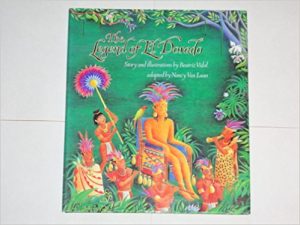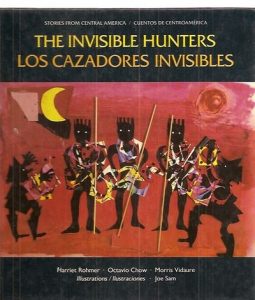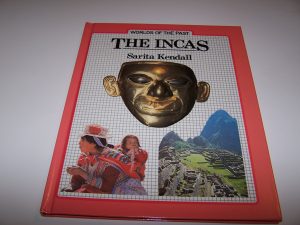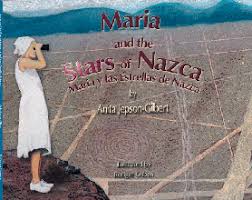 Describes how Maria Reiche, a German scientist living in Peru in the 1930s, observed the lines on the Nazca desert and was one of the first to realize that they formed the outlines of animals only visible from the air.
Describes how Maria Reiche, a German scientist living in Peru in the 1930s, observed the lines on the Nazca desert and was one of the first to realize that they formed the outlines of animals only visible from the air.
Indigenous
The Legend Of El Dorado
The Invisible Hunters
The Incas (Worlds Of The Past)
Amazonia
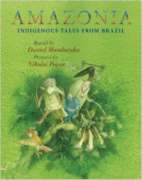
Amazonia is a book of Brazilian folk tales. Mermaids, serpents, tigers, snakes, flying men, witches — extraordinary creatures from the world’s most important jungle live on in these tales. The stories are fascinating, and sometimes startling, as protagonists are killed off or transformed into animals — or rise up precipitously into the heavens. More than just rollicking adventures, they offer a panorama of experience — conflict and death, love and seduction, greed and gluttony, hunting and fishing, cooking and caring for plants — and describe the origins of the natural world.
Middleworld
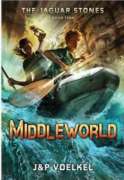
When his archaeologist parents go missing in Central America, 14-year-old Max embarks on a wild adventure through the Mayan underworld in search of the legendary Jaguar Stones, which enabled ancient Mayan kings to wield the powers of living gods. Includes cast of characters, glossary, facts about the Maya cosmos and calendar, and a recipe for chicken tamales.
One Day In the Tropical Rain Forest
The future of the Rain Forest of the Macaw depends on a scientist and a young Indian boy as they search for a nameless butterfly during one day in the rain forest.
The Tiny Boy And Other Tales From Indonesia
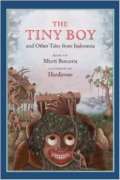
Eight tales about heroes and sacrifice, love and family — all rooted in a land that is both challenging and abundant. Some of the stories strike a familiar chord. There is the tiny child, no bigger than a thumb, who outwits a giant; the poor farmer who cannot feed his children and leaves them abandoned in the forest; the princess who breaks an enchantment and releases a prince. Yet the tales are filled with the unexpected, too, as humans, monsters and the natural world transform and intersect.
A princess who is pursued by two kings from neighboring kingdoms sacrifices herself to keep peace in the land, and is transformed into a sea creature that will provide nourishment for all her people. A crying baby, ignored by his mother, turns into a bird, teaching villagers a valuable lesson. A jealous concubine poisons the king’s son so her own child can inherit the kingdom, only to find her son going off to search for his half-brother, never to return. A man traps the sun to stop it from setting, so that his family and fellow villagers will have enough time to gather food.
The stories are exceptionally relevant today, as they draw our attention to the value of the odd and the small, the preciousness of children and our natural resources, the need to not take our food for granted.
Gathered from oral sources and old collections written in Dutch and indigenous languages, these folktales are simply and evocatively told, accompanied by startling and vibrant images by Indonesian artist Hardiyono.
When Animals Were People/Cuando Los Animales Eran Personas: A Huichol Indian Tale/Un Cuento Huichol
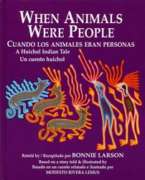
A traditional Huichol folktale of the magical time when animals had human characteristics and were first learning from the Spirits of Nature and each other to find their true homes and unique wisdom.
Trickster: Native American Tales: A Graphic Collection
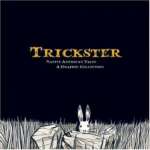
All cultures have tales of the trickster—a crafty creature or being who uses cunning to get food, steal precious possessions, or simply cause mischief. He disrupts the order of things, often humiliating others and sometimes himself. In Native American traditions, the trickster takes many forms, from coyote or rabbit to raccoon or raven. The first graphic anthology of Native American trickster tales, Trickster brings together Native American folklore and the world of comics.

